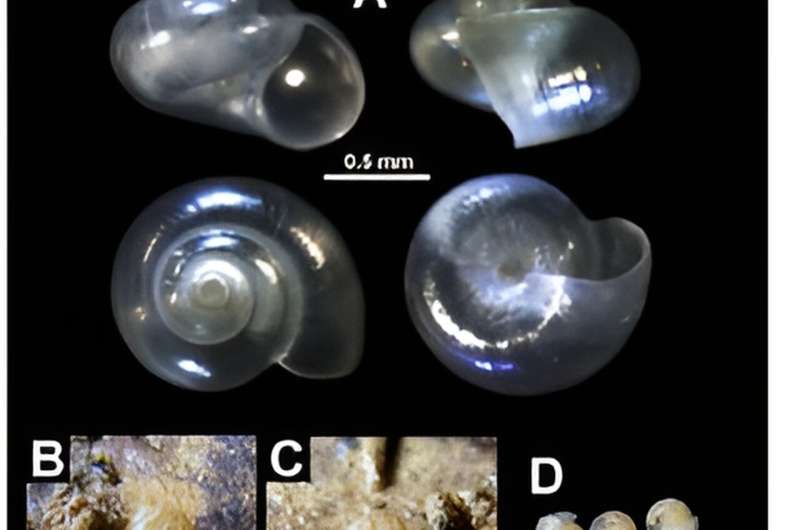This article has been reviewed according to Science X's editorial process and policies. Editors have highlighted the following attributes while ensuring the content's credibility:
fact-checked
trusted source
proofread
Out of the shell: Taxonomic classification of a novel snail native to Japan

In Japan, a peculiar gastropod species was discovered more than three decades ago, gaining attention upon being labeled as "vulnerable" or "near threatened" in several government and local red lists. This species, referred to as Ka-wa-tare-kawa-zanshō in Japanese, remained undescribed until recent efforts sought to rectify this omission.
Dr. Hiroshi Fukuda, an Associate Professor at the Faculty of Environmental, Life, Natural Science and Technology, Okayama University, Japan, who first discovered this species, meticulously classified it through a comprehensive exploration of its anatomical characters. His research and findings were published in Molluscan Research.
"I found the new species 31 years ago when I was a fourth-year University student. I began the taxonomic revision of the Assimineidae on becoming aware that the species is a member of the family despite the morphological dissimilarity," Dr. Fukuda recounted, shedding light on the motivation behind this study.
For the classification, Dr. Fukuda examined, cataloged, and deposited snail specimens across multiple collections and museums. They were categorized based on their collection sites and preservation methods, ranging from dry specimens to those preserved in solutions such as neutral seawater formalin or ethanol.
Taxonomic analysis defined the newly discovered species as Xenassiminea nana, within the family Assimineidae. The species name "nana," derived from the Latin term "nanus" meaning dwarf, directly reflects the exceptionally small size of this species, which is the smallest among known assimineids.
The species displays unique characters such as distinct omniphoric grooves, specific radular teeth, reproductive system, and a nervous system organization, placing it within the family Assimineidae despite superficial similarities to other gastropod families due to convergence. It shares certain traits with other assimineine members but distinguishes itself through a depressed shell shape and less pronounced cephalic tentacles.
Its tentacular nerve's unique behavior of running parallel to the optic nerve and reaching a triangular bulge around each eye is distinct and unseen in other taxa within the family. These specific anatomical traits and unique shell features prompted the creation of a new genus Xenassiminea, segregating it as a distinct entity within Assimineidae.
Furthermore, the study presents a comprehensive anatomical examination of Xenassiminea nana. It explores the shell characters, noting its small helicoid shape that turns from transparent in youth to opaque in maturity. The creature has translucent skin, prominent tentacles, noticeable black eyes, and is capable of crawling rapidly.
The study also meticulously describes the digestive system, reproductive organs in both male and female specimens, and provides insights into the central nervous system, highlighting ganglia, nerves, and connectives throughout.
Xenassiminea nana is native to the temperate zones of mainland Japan and inhabits narrow spaces under rocks or buried in gravel. Records of this species are documented from various prefectures along the Pacific coast, Japan Sea, and East China Sea coastlines of Japan. Landfilling and reclamation activities have depleted the habitat of these snails.
"Actions undertaken for biodiversity conservation are not yet enough, partly because many people do not know that there are many little-known endangered species, especially minute invertebrates. This newly discovered species is a prime example of such overlooked biodiversity, offering valuable insights into the critical conditions necessary for biodiversity preservation," notes Dr. Fukuda, emphasizing the urgent need for its conservation.
Young researchers must actively immerse themselves in morphological studies to understand the role of smaller invertebrates in marine ecosystems. Without prompt conservation efforts, smaller invertebrates may transition from being endangered to extinct, sooner than anticipated.
More information: Hiroshi Fukuda, A new genus and species of the Assimineidae (Caenogastropoda: Truncatelloidea) from temperate mainland Japan, Molluscan Research (2023). DOI: 10.1080/13235818.2023.2278070
Provided by Okayama University




















